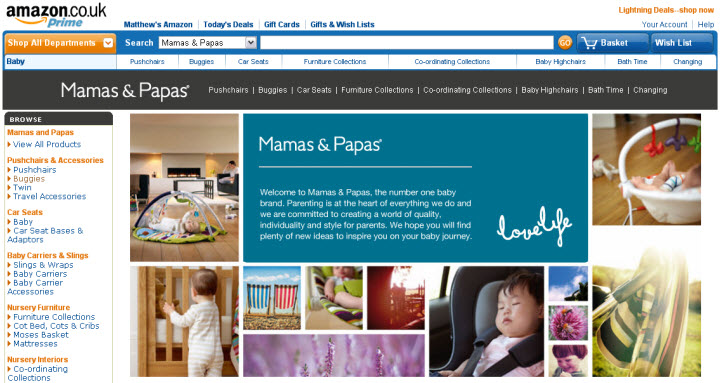Q&A Free Delivery Versus Reasonable Delivery Costs On Amazon
This is the third of a series of articles where I’m answering several questions that have come in via email in the past few days, that I feel that you’d gain value from hearing the answer too.
Free Delivery Versus Reasonable Delivery Costs
Today’s question is from Christine and is in relation to the having free shipping v’s reasonable shipping costs on Amazon.
The reason why it’s curious is because Amazon is quite different to eBay in the way it organises listing & prices and I’d like to delve into the Amazon Buy Box a little deeper and their prime subscriptions too.
Here’s the question:
Hi There Matthew,
I was just wondering what your thoughts were on Free Delivery versus reasonable delivery costs.
I started selling on Amazon about 1 year ago and have always gone for the reasonable delivery costs option so the actual product price appears a little lower than those who offer Free Delivery.
Even though Amazon calculates the cheapest offer based on a total of product and delivery charges my thoughts are that if a buyer sees a cheaper product cost plus reasonable delivery cost then the perception is that the product is more reasonably priced overall.
However I am considering changing to Free UK delivery for ease of calculating delivery costs etc
Kind Regards
Christine
Price Perception
I feel Christine is right, the perception that a customer would have that the price is good and the shipping is sensible then it would appear as a better proposition overall.
However, we must account for that we would assume this to be logical, but as buyers we’re not logical at all, we’re emotional, plus we are considering the Amazon marketplace here and while this may be true for other marketplaces or on our own websites, for Amazon I don’t think this is true and I’ll explain why.
By the way, if you think I’m wrong, you can let me know in the comments box at the bottom.
The Amazon Buy Boxes
To see where I’m going with this reply, we need to take a look at the buy boxes on Amazon and how the change.
Amazon Only / Amazon Prime
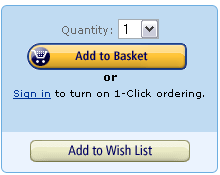 If we take a look at the normal Amazon buy box on for an item that is being sold by Amazon directly, then we can see it’s very clean.
If we take a look at the normal Amazon buy box on for an item that is being sold by Amazon directly, then we can see it’s very clean.
As a buyer we’re presented with just the quantity option, add to basket as the primary action, the option to login or the secondary action of adding it to a wishlist.
All pretty clean.
3rd Party Seller + Free Delivery
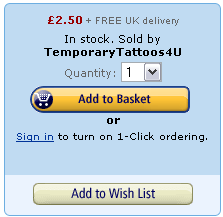
However if we now look at Amazon buy box where there isn’t Amazon and just a 3rd party seller like us, then we can see that the buy box has the extra details at the top about the seller.
We can also see the item price and the shipping amount and the sellers name, noting that the delivery amount is emphasised as “FREE UK delivery”.
3rd Party Seller + Paid Delivery
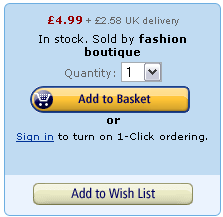 In the buy box to the right, we have a product where the seller has a delivery price entered.
In the buy box to the right, we have a product where the seller has a delivery price entered.
In comparison, the “FREE UK delivery” stands out more, but Amazon are not promoting the total price, just that there is extra postage to be paid.
And When We have Multiple Sellers
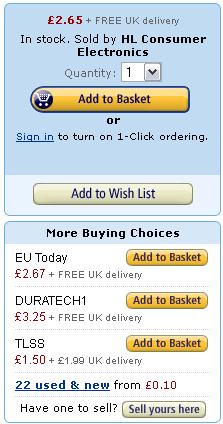 There can only be one winner and if you’re up against an Amazon stocked item or an FBA seller then the chances of you obtaining the buy box on equal total pricing, is remote.
There can only be one winner and if you’re up against an Amazon stocked item or an FBA seller then the chances of you obtaining the buy box on equal total pricing, is remote.
If there are multiple sellers that are eligible for the buy box, will rotate at differing speeds through the buy box and any sellers that are not in the main buy box are shown below.
If we look at the example to the right, then we have a winner that is at £2.65 + free delivery and three others with the same product at various prices, however the last one from TLSS is the one I’d like to point out in more detail next.
Note: If you’d like to know a formula that will get you access to the Amazon Buy box for longer, then see this article which gives you this and it’s proven to work and if you’d like to know more about Amazon’s “Seller Ratings”, the new scoring system for Amazon Sellers you can here.
I’m just a mere customer, not a mathematician.
In the buy box example above we’re given numerous options, but as a buyer I only really care about the total price and also I’m just a mere customer, not a mathematician.
Making a buyer think is a bad thing
If I’m presented with prices that all have free options, then I see the prices as the total price. However if you ask me to compare four prices on one set of terms, they’re all total prices with free shipping and you lob me a price that I need to calculate in my head, then you are making me think.
Trying sum up the prices so that I can either rule in the £1.50 plus £1.99 option when all the others are just prices with free shipping makes me think and making a buyer think is a bad thing.
We need to make it as easy as possible for them to work out if the proposition is a good one or not and if the playing field are using free shipping, then that is what you should follow, free shipping, otherwise we’re making the buyers think.
Considering Amazon Prime Users
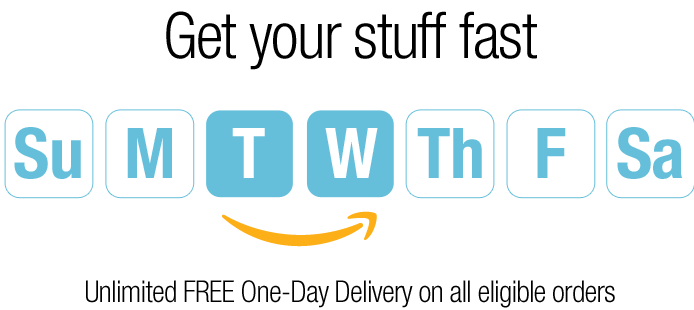 If we also account for Amazon Prime accounts, this is where an Amazon customer has paid £49 a year (or $79 in the USA) these are the power buyers on Amazon.
If we also account for Amazon Prime accounts, this is where an Amazon customer has paid £49 a year (or $79 in the USA) these are the power buyers on Amazon.
According to ChannelAdvisor’s Scot Wingo last year, there are approximately 10-12 million Amazon Prime users whom he also believes that these buyers account for a 3 to 4 times increase in buying volumes. As such they should not be ignored.
If we consider that it was you that paid £50 to have free next day delivery on items, then you’re not going to be that excited about paying extra for shipping when you’ve already stumped up £50 for an item on the Amazon marketplace where you’ve already made a decent outlay to get free shipping. In short as an Amazon Prime buyer you expect free shipping.
Note: You can gain access to these buyers by using FBA (Fulfilment By Amazon), this isn’t for everyone and doesn’t suit all products.
In Summary
Me me me me me me me me me me, that’s all the customer cares about. Using a quote from Seth Godin:
Customers want ME-MAIL not Email
So with me in mind (as a potential customer) I have a Amazon Prime subscription and trust me I hate paying postage on Amazon after paying £50 for free delivery and I know what the difference is between marketplace, FBA and Amazon stocked products are!!!!
I bet the vast majority of Amazon customers don’t and they just want simple pricing and the simplest it can be is price + free delivery.
While me and you may know that your postage prices are excellent, 99.9% of customers probably don’t know the latest price of a first class stamp (what is that now anyway?), let alone the different pricing bands from Royal Mail and whether your postage price is good value or not. They just want a total price.
If we consider the case for Christine, then if your competition are offering free delivery, then don’t make your buyers try and do maths, regardless of how simple it is. Customers are like babies, you need to keep it as simple as possible and spoon feed them just enough information so they get what they need to know at that moment in time.
Make it really easy for them and let them see that your total price is excellent.
Make it really easy for them and let them see that your total price is excellent. And if in doing so means you need to combine the shipping prices into the sell price and offer free shipping, then so be it.
In the original question from Christine, Christine was considering moving to a free shipping model on Amazon, the answer now with the explanation why, is yes you should move to a free shipping model on Amazon and I’ve hoped I’ve explained why.
Do You use Free Shipping on Amazon or Another Marketplace?
If you do and have seen a positive or a negative impact to doing so, let Christine know by leaving her a comment in the comments box at the bottom.

 Time, we never have enough of it and as business owners, we always wish we had more, I know I do!
Time, we never have enough of it and as business owners, we always wish we had more, I know I do!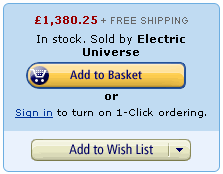 Today’s question is in relation to scoring the Amazon Buy Box for the first time in a new Amazon account.
Today’s question is in relation to scoring the Amazon Buy Box for the first time in a new Amazon account. Amazon to the best of my knowledge sand-boxed new selling accounts. This is where they trickle you sales over a long period of time to see how the business reacts to increasing sales. It’s a good system, that works and this also highlights that Amazon is focused on looking after number 1 in the equation.
Amazon to the best of my knowledge sand-boxed new selling accounts. This is where they trickle you sales over a long period of time to see how the business reacts to increasing sales. It’s a good system, that works and this also highlights that Amazon is focused on looking after number 1 in the equation.

 Amazon UK is rolling out a new “Seller Ratings” that scores you bonus points for being good and slaps you hard for being bad.
Amazon UK is rolling out a new “Seller Ratings” that scores you bonus points for being good and slaps you hard for being bad. I have always suspected that Amazon would have such a system in place similar to this, well it’s not hard to guess what else would power the buy box percentages? And now we can see the evidence that this is the case.
I have always suspected that Amazon would have such a system in place similar to this, well it’s not hard to guess what else would power the buy box percentages? And now we can see the evidence that this is the case.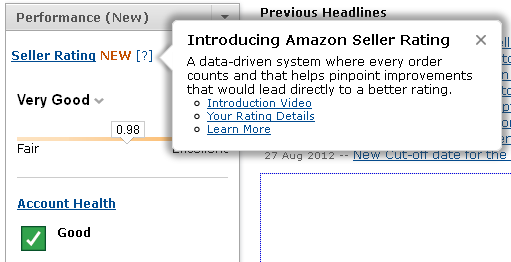 If you have this enabled you’ll know. There is a whopping great big pop-up message that appears on the Amazon dashboard after signing in. You’re given a rating and on a sliding scale of Fair to Excellent and in this example we can see this account is “Very Good”.
If you have this enabled you’ll know. There is a whopping great big pop-up message that appears on the Amazon dashboard after signing in. You’re given a rating and on a sliding scale of Fair to Excellent and in this example we can see this account is “Very Good”.
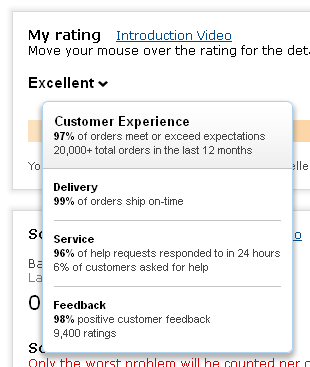 This block shows how you’re fairing and where you sit on the scale of “Fair” to “Excellent”. I didn’t notice this until later, but each of these ratings has a score assigned:
This block shows how you’re fairing and where you sit on the scale of “Fair” to “Excellent”. I didn’t notice this until later, but each of these ratings has a score assigned: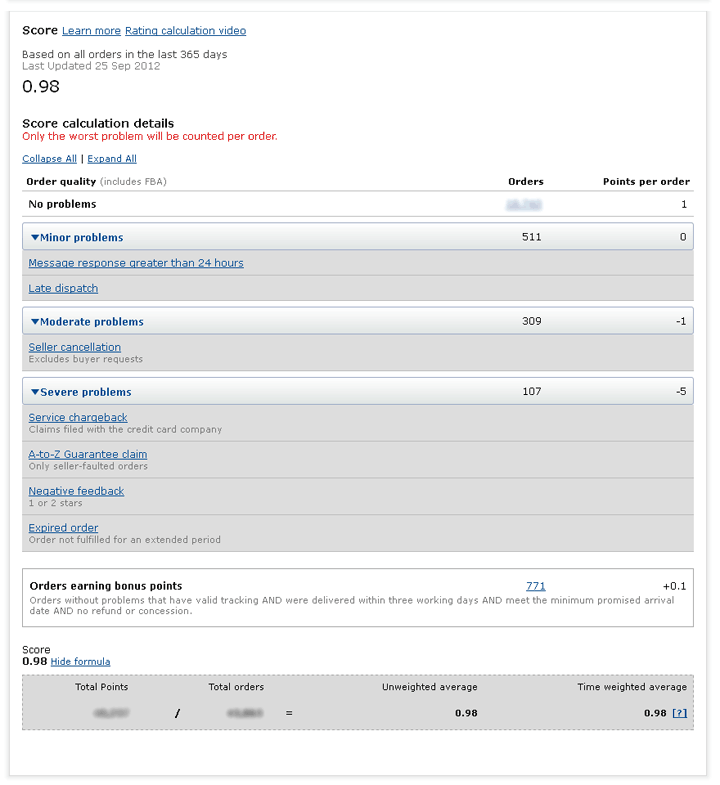 These points are broken up into 4 sections and there is a bonus too.
These points are broken up into 4 sections and there is a bonus too. Assuming that most businesses include these details anyway, this could be an easy win.
Assuming that most businesses include these details anyway, this could be an easy win. This section shows the number of negative feedback, number of seller cancellations and late despatches, that in itself is useful, but what is sat behind this is even cooler and we’ll be looking at the new reporting tools in more depth shortly. Each of the suggestions, link to the same help page on Amazon
This section shows the number of negative feedback, number of seller cancellations and late despatches, that in itself is useful, but what is sat behind this is even cooler and we’ll be looking at the new reporting tools in more depth shortly. Each of the suggestions, link to the same help page on Amazon 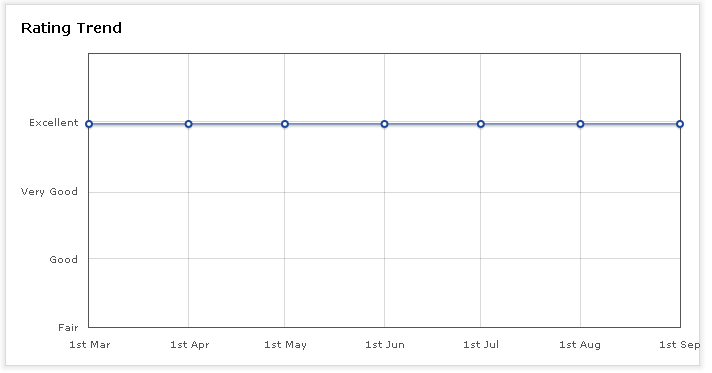 Decidedly un-remarkable currently, this chart over time will track your performance so you can see where your account is going. It gets better… honest.
Decidedly un-remarkable currently, this chart over time will track your performance so you can see where your account is going. It gets better… honest.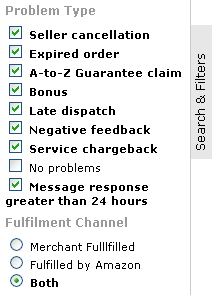 Transparency has been a big issues for sellers on eBay, especially for DSR ratings. Some sellers get reports and some do not. Finding out who has left you poor ratings is ni-on impossible for the masses and this is where Amazon have done really well. Their reporting for this new section is amazing.
Transparency has been a big issues for sellers on eBay, especially for DSR ratings. Some sellers get reports and some do not. Finding out who has left you poor ratings is ni-on impossible for the masses and this is where Amazon have done really well. Their reporting for this new section is amazing.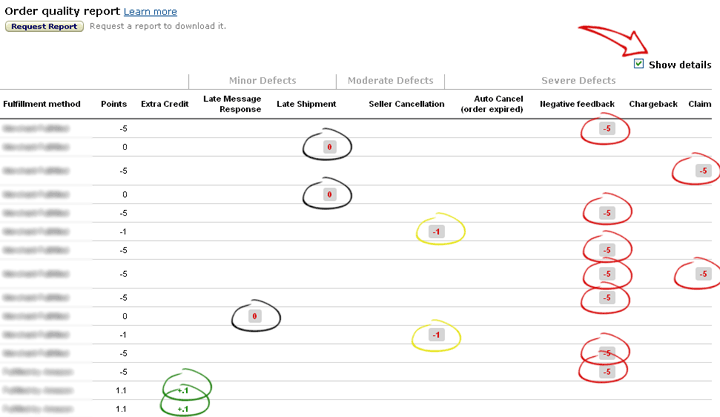 In the report above I have used a couple of colours to indicated the different scores in action. For orders where there has been a screw up, then -5 points have been applied, there are a few -1’s and a few 0’s as well.
In the report above I have used a couple of colours to indicated the different scores in action. For orders where there has been a screw up, then -5 points have been applied, there are a few -1’s and a few 0’s as well. A little over three weeks ago I asked what you were struggling with and the larger topics I’m covering on the
A little over three weeks ago I asked what you were struggling with and the larger topics I’m covering on the  Not ideal, but what it indicate is that you can put a keyword inside a keyword and with a little inspiration a few years ago, this turned into a really cool feature, which when used correctly can help structure your date very cleanly.
Not ideal, but what it indicate is that you can put a keyword inside a keyword and with a little inspiration a few years ago, this turned into a really cool feature, which when used correctly can help structure your date very cleanly.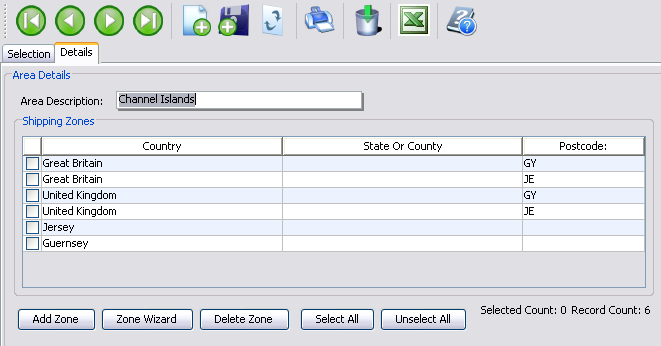
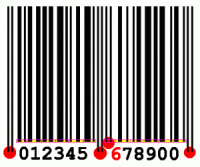 If you have your own Barcode range from GS1, then it’s dead easy for this range to be added to your eSellerPro account and then when you send a new product to Amazon that does not have a EAN (or UPC) set, one will be automatically assigned for you.
If you have your own Barcode range from GS1, then it’s dead easy for this range to be added to your eSellerPro account and then when you send a new product to Amazon that does not have a EAN (or UPC) set, one will be automatically assigned for you. The final topic that you probably didn’t know that eSellerPro could do is water mark your images automatically.
The final topic that you probably didn’t know that eSellerPro could do is water mark your images automatically. Receiving a negative comment regardless if it’s on a marketplace or not is not fun, however with this simple to follow guide you can get some of your negative and neutral comments removed.
Receiving a negative comment regardless if it’s on a marketplace or not is not fun, however with this simple to follow guide you can get some of your negative and neutral comments removed. Amazon has spent years building up their reviews database, from what started as staff adding their reviews to the vibrant feedback forum it has now turned into with products that receiving decent 4 & 5 star reviews outstripping their competition hands down. The type of feedback comment you can easily ask to be removed from Amazon is the type of feedback that includes a review of the product. After all a product review should be in the correct section for others to see, not in a sellers feedback profile.
Amazon has spent years building up their reviews database, from what started as staff adding their reviews to the vibrant feedback forum it has now turned into with products that receiving decent 4 & 5 star reviews outstripping their competition hands down. The type of feedback comment you can easily ask to be removed from Amazon is the type of feedback that includes a review of the product. After all a product review should be in the correct section for others to see, not in a sellers feedback profile.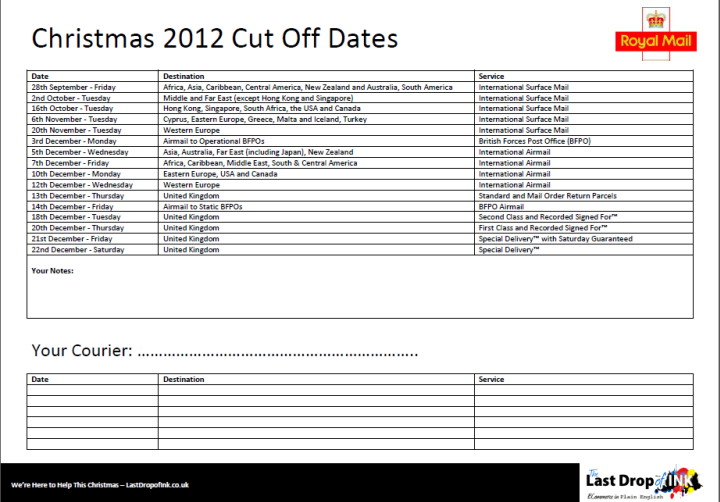
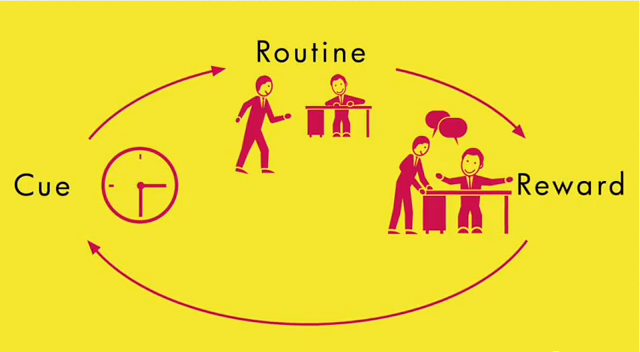
 This isn’t a joke, it’s certainly not a ruse, it’s a very serious point you cannot ignore and I’ve suffered from it for ages with this very site.
This isn’t a joke, it’s certainly not a ruse, it’s a very serious point you cannot ignore and I’ve suffered from it for ages with this very site.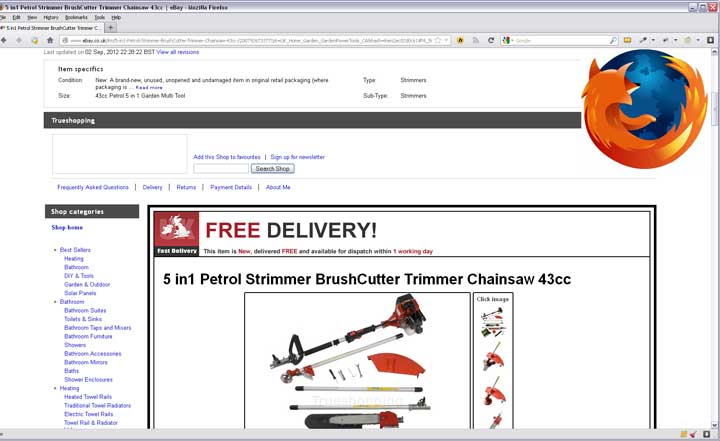
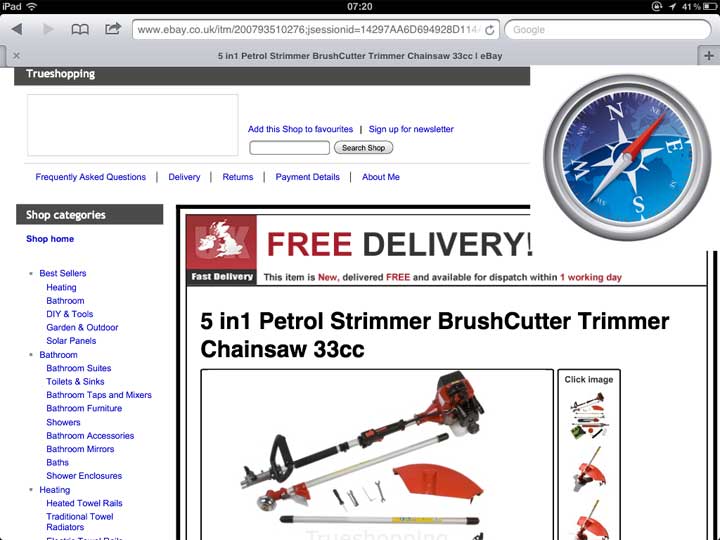



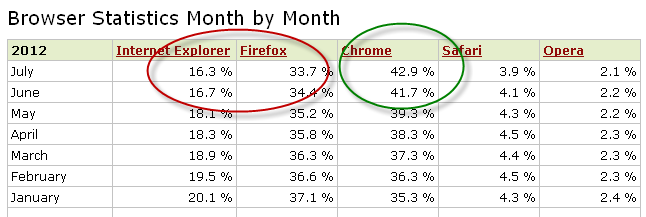
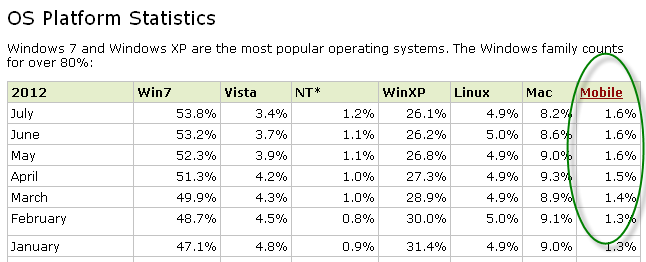
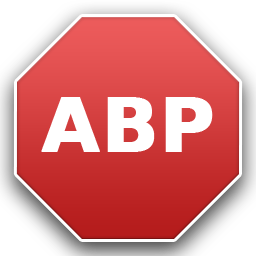 In the case of the example listing above, that was the case, the innner division that contained the entire eBay listing description is called “ad_container”. If you were an “AdBlocking” piece of software, you’d block that division too!
In the case of the example listing above, that was the case, the innner division that contained the entire eBay listing description is called “ad_container”. If you were an “AdBlocking” piece of software, you’d block that division too! The corporate version of dating & relationships,
The corporate version of dating & relationships,  Nope no scout badges here, dib-dib-dob-dob… but the saying is true, “be prepared” before you attend.
Nope no scout badges here, dib-dib-dob-dob… but the saying is true, “be prepared” before you attend. It’s important to locate where the cafe/rest areas are too. This isn’t because of my obsession with coffee, this is is because you’ll need a base to work from.
It’s important to locate where the cafe/rest areas are too. This isn’t because of my obsession with coffee, this is is because you’ll need a base to work from.
 So let’s say you’ve done your research in the previous tip’s and know exactly which companies you wish to approach, that was the ground work. What we now need to do is locate the right people in the team to meet.
So let’s say you’ve done your research in the previous tip’s and know exactly which companies you wish to approach, that was the ground work. What we now need to do is locate the right people in the team to meet. Times are apparently tough (they always are though!), leverage this to your advantage and remember that they need your business.
Times are apparently tough (they always are though!), leverage this to your advantage and remember that they need your business.